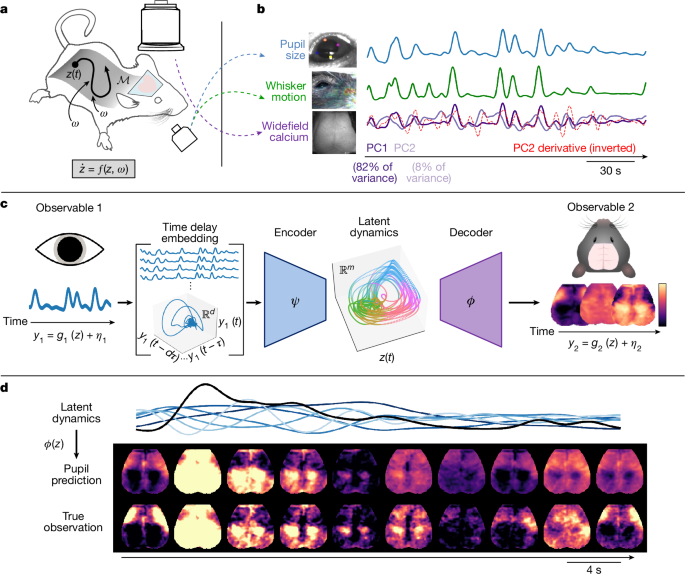
"The past decade has seen a proliferation of research into the organizing principles, physiology and function of ongoing brain activity and brain 'states' as observed across various recording modalities, spatiotemporal scales and species. Ultimately, it is of interest to understand how such wide-ranging phenomena are coordinated within a functioning brain. However, as different domains of neuroscience have evolved around unique subsets of observables, the integration of this research into a unified framework remains an outstanding challenge15."
"Interpreting ongoing neural activity is further complicated by its widespread, spatiotemporally heterogeneous relationships with behavioural and physiological variables. For instance, in awake mice, individual cells and brain regions show reliable temporal offsets and multiphasic patterns in relation to spontaneous whisker movements or running bouts. Such findings have spurred widespread interest in disambiguating neural fluctuations interwoven with state changes and movements18,19."
A parsimonious explanation unifies widespread observations: neural activity, organismal physiology and behaviour are jointly regulated by an intrinsic arousal-related process that continuously evolves on a latent, nonlinear manifold over seconds. Ongoing neural activity shows widespread, spatiotemporally heterogeneous relationships with behavioural and physiological variables, including reliable temporal offsets and multiphasic patterns in relation to spontaneous whisker movements or running in awake mice. Nominally arousal-related fluctuations indexed by pupillometry, locomotion, cardiorespiratory measures and EEG are implicated across physiology and behaviour and emerge as a principal statistical factor of global neural variance. Integration across diverse observables remains challenging.
Read at Nature
Unable to calculate read time
Collection
[
|
...
]